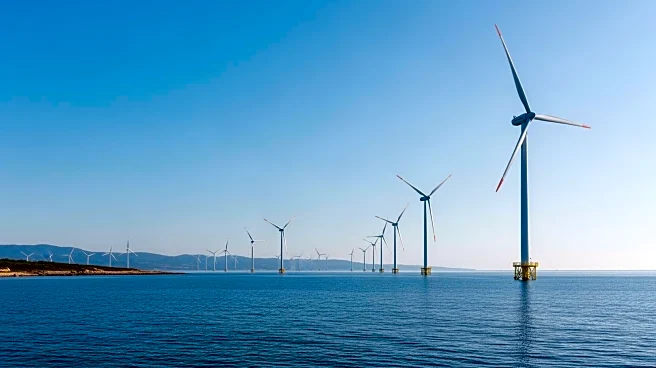What's Happening?
BHP, the world's largest miner by market value, has reported a strong start to the fiscal year, driven by increased copper and iron-ore production. In its September quarter operational review, BHP announced
a 4% rise in group copper production, reaching 494,000 tonnes, largely due to record concentrator throughput at its Escondida mine in Chile. Despite a 1% dip in iron-ore output from Western Australia Iron Ore (WAIO) due to planned maintenance, the division achieved record material mined and completed a major infrastructure rebuild ahead of schedule. CEO Mike Henry highlighted disciplined operating performance and execution of scheduled maintenance as key factors in the company's success. BHP's copper assets in Chile, Australia, and Peru are benefiting from firm prices and tightening global supply, with major disruptions at competitors' mines further strengthening market fundamentals.
Why It's Important?
The strong performance by BHP underscores the resilience of the mining sector amid global economic uncertainties. The increase in copper production is significant as copper is a critical component in various industries, including electronics and renewable energy. The company's ability to maintain production levels despite market disruptions highlights its operational efficiency and strategic positioning. BHP's achievements in infrastructure upgrades and environmental approvals for expansion projects indicate a commitment to growth and sustainability. The positive outlook for copper and iron-ore prices suggests continued demand, which could bolster BHP's financial performance and influence global commodity markets. Additionally, the company's progress in decarbonization and renewable energy agreements reflects broader industry trends towards sustainable practices.
What's Next?
BHP is expected to continue its focus on growth and sustainability initiatives. The completion of the Laguna Seca expansion at Escondida and the renewable electricity agreement in Copper South Australia are key milestones in its growth strategy. The company is also advancing its Jansen potash project in Canada, with Stage 1 on track for production in 2027. BHP's strategic investments and operational improvements position it well to capitalize on long-term demand for commodities. However, challenges such as the Queensland government's royalty regime may impact future investment decisions. BHP's ability to navigate these challenges while maintaining production levels will be crucial for its continued success.
Beyond the Headlines
BHP's focus on decarbonization and renewable energy agreements highlights the mining industry's shift towards sustainable practices. The company's environmental approvals and infrastructure upgrades reflect a commitment to reducing its carbon footprint and enhancing operational efficiency. These efforts align with global trends towards sustainability and could set a precedent for other mining companies. BHP's strategic positioning in the copper market, amid tightening supply and disruptions at competitors' mines, underscores the importance of operational resilience and adaptability in the face of market fluctuations.












